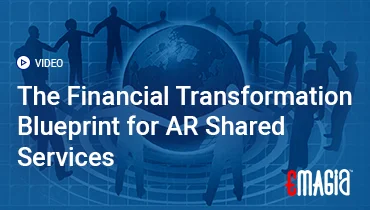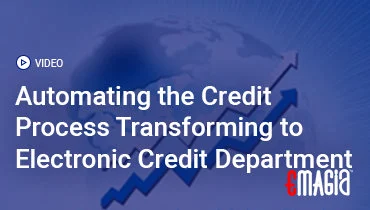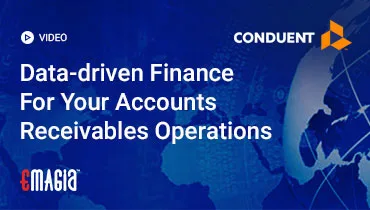Balance sheet reconciliation is a fundamental process in accounting that ensures the accuracy and integrity of a company’s financial statements. It involves comparing the balances in a company’s accounting records to external documents, such as bank statements, to identify and rectify discrepancies. This comprehensive guide delves into the intricacies of balance sheet reconciliation, its importance, processes, best practices, and how automation tools like Emagia can enhance efficiency.
Understanding Balance Sheet Reconciliation
Balance sheet reconciliation is the process of verifying that the balances of accounts listed on a company’s balance sheet are accurate and consistent with supporting documentation. This process is crucial for maintaining the reliability of financial statements and ensuring compliance with accounting standards.
Key Components of Balance Sheet Reconciliation
- Account Balances: Verifying the accuracy of balances for assets, liabilities, and equity accounts.
- Supporting Documentation: Comparing internal records with external documents like bank statements, invoices, and receipts.
- Adjustments: Making necessary corrections for discrepancies identified during the reconciliation process.
Importance of Balance Sheet Reconciliation
Regular balance sheet reconciliation is vital for several reasons:
- Accuracy in Financial Reporting: Ensures that financial statements reflect the true financial position of the company.
- Fraud Detection: Helps in identifying unauthorized transactions or fraudulent activities.
- Regulatory Compliance: Maintains adherence to accounting standards and legal requirements.
- Efficient Audit Processes: Facilitates smoother audits by providing accurate and verifiable financial data.
- Cash Flow Management: Assists in monitoring and managing the company’s liquidity effectively.
The Balance Sheet Reconciliation Process
A systematic approach to balance sheet reconciliation involves several steps:
- Data Collection: Gather all relevant financial records, including general ledger accounts and supporting documents.
- Comparison: Match the balances in the accounting records with external documents to identify discrepancies.
- Discrepancy Analysis: Investigate the reasons for any differences found during the comparison.
- Adjustments: Make necessary corrections in the accounting records to resolve discrepancies.
- Documentation: Maintain detailed records of the reconciliation process, including any adjustments made.
- Review and Approval: Have the reconciliation reviewed and approved by authorized personnel to ensure accuracy and completeness.
Best Practices for Effective Balance Sheet Reconciliation
Implementing best practices can enhance the efficiency and accuracy of the reconciliation process:
- Automate Reconciliation Processes: Utilize accounting software to automate data collection and comparison, reducing manual errors.
- Regular Reconciliation Schedule: Establish a consistent schedule (monthly, quarterly) for performing reconciliations.
- Standardized Procedures: Develop standardized templates and procedures to ensure consistency across the organization.
- Segregation of Duties: Assign different individuals to prepare and review reconciliations to prevent fraud and errors.
- Focus on High-Risk Accounts: Prioritize the reconciliation of accounts with high transaction volumes or susceptibility to errors.
- Continuous Monitoring: Implement real-time monitoring to detect and address discrepancies promptly.
- Training and Support: Provide ongoing training to staff involved in the reconciliation process to keep them updated on best practices and tools.
Challenges in Balance Sheet Reconciliation
Despite its importance, balance sheet reconciliation can present several challenges:
- Manual Processes: Relying on manual methods can be time-consuming and prone to errors.
- Data Inconsistencies: Discrepancies between internal records and external documents can complicate the reconciliation process.
- Complex Transactions: Handling complex financial instruments or transactions can increase the difficulty of reconciliation.
- Lack of Standardization: Inconsistent procedures across departments can lead to inefficiencies and errors.
How Emagia Enhances Balance Sheet Reconciliation
Emagia offers advanced automation solutions that streamline the balance sheet reconciliation process:
- Automated Data Integration: Emagia’s platform integrates with various financial systems to automatically collect and consolidate data.
- Real-Time Reconciliation: Enables continuous monitoring and real-time reconciliation, allowing for immediate detection and resolution of discrepancies.
- Advanced Analytics: Provides insightful analytics to identify trends, anomalies, and areas for improvement in the reconciliation process.
- Customizable Workflows: Offers customizable workflows to align with the organization’s specific reconciliation procedures and policies.
- Audit Trail: Maintains a comprehensive audit trail of all reconciliation activities, facilitating compliance and audit readiness.
By leveraging Emagia’s automation capabilities, organizations can enhance the accuracy, efficiency, and reliability of their balance sheet reconciliation processes.
Frequently Asked Questions
What is balance sheet reconciliation?
Balance sheet reconciliation is the process of verifying that the balances of accounts listed on a company’s balance sheet are accurate and consistent with supporting documentation.
Why is balance sheet reconciliation important?
It ensures the accuracy of financial statements, detects fraud, maintains regulatory compliance, facilitates audits, and aids in effective cash flow management.
How often should balance sheet reconciliation be performed?
The frequency depends on the organization’s size and complexity, but it is commonly performed monthly or quarterly.
What are common challenges in balance sheet reconciliation?
Challenges include manual processes, data inconsistencies, complex transactions, and lack of standardized procedures.
How can automation tools like Emagia help in balance sheet reconciliation?
Automation tools streamline data collection, enable real-time reconciliation, provide advanced analytics, offer customizable workflows, and maintain comprehensive audit trails.
By understanding and implementing effective balance sheet reconciliation practices, organizations can ensure the integrity of their financial reporting and make informed strategic decisions.



